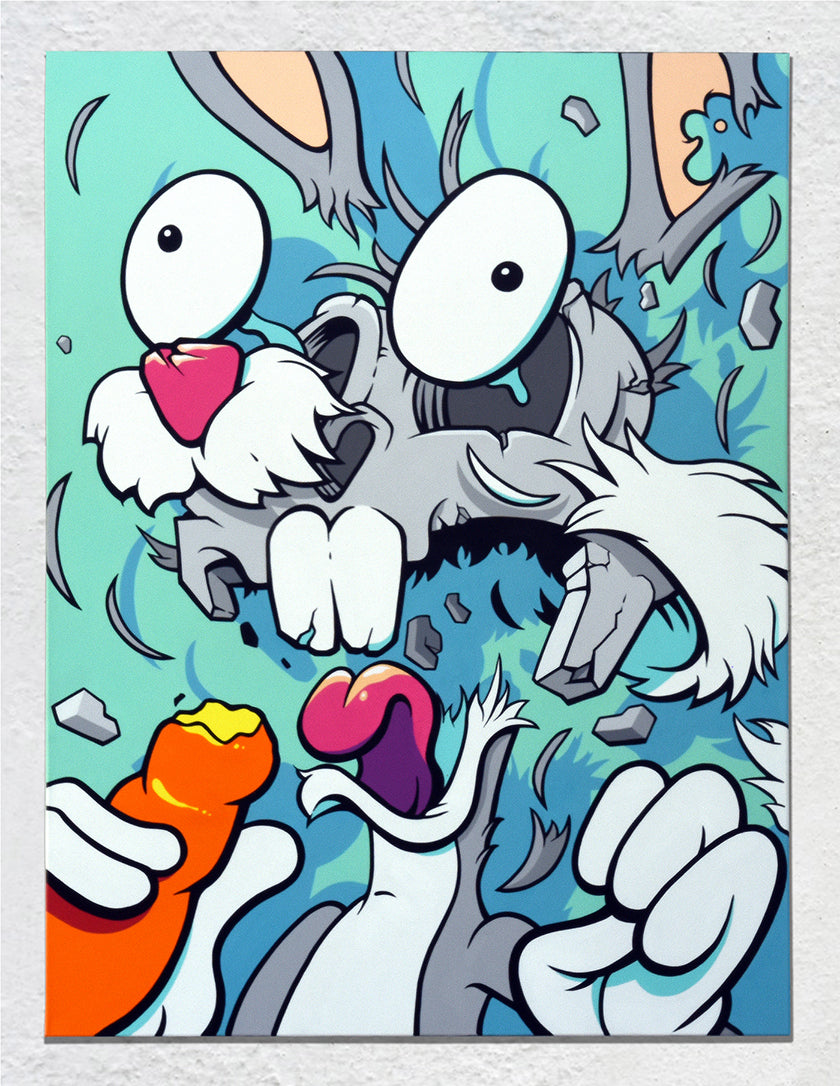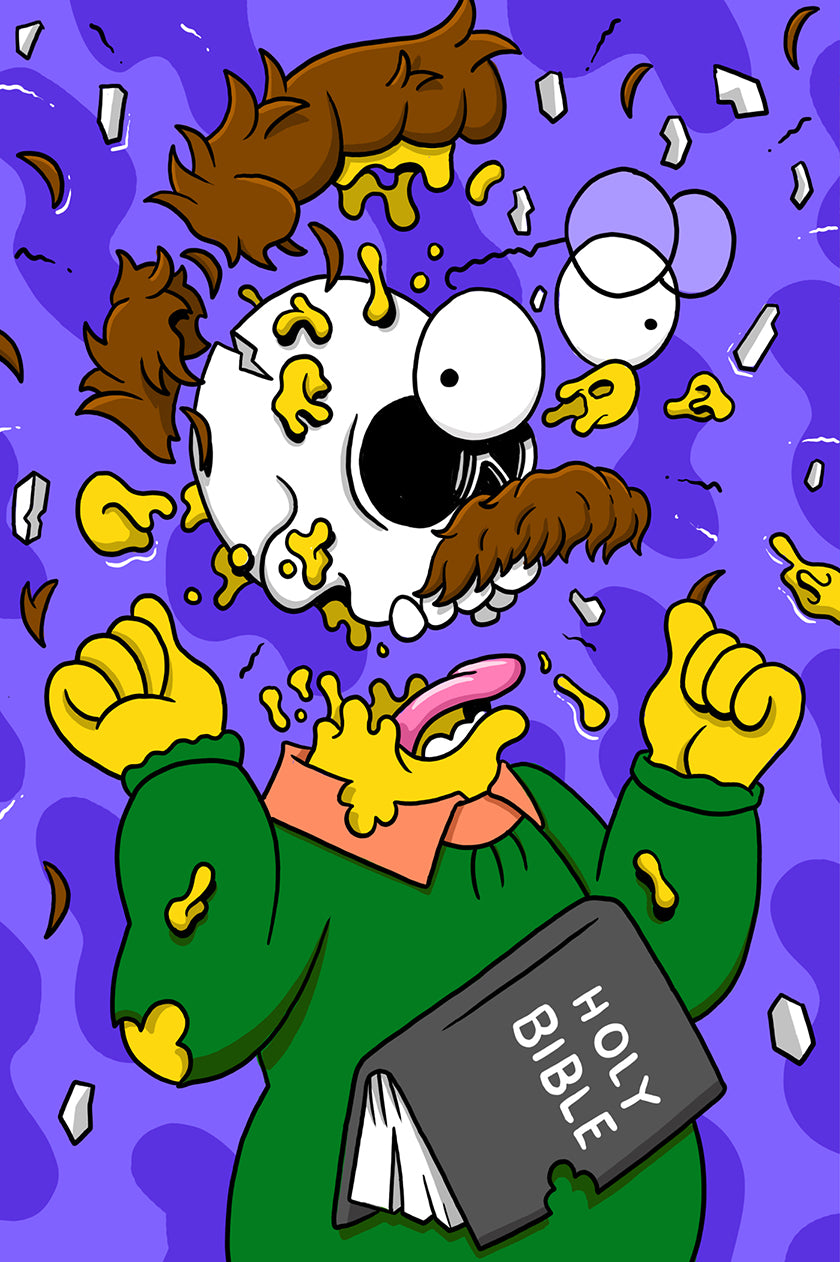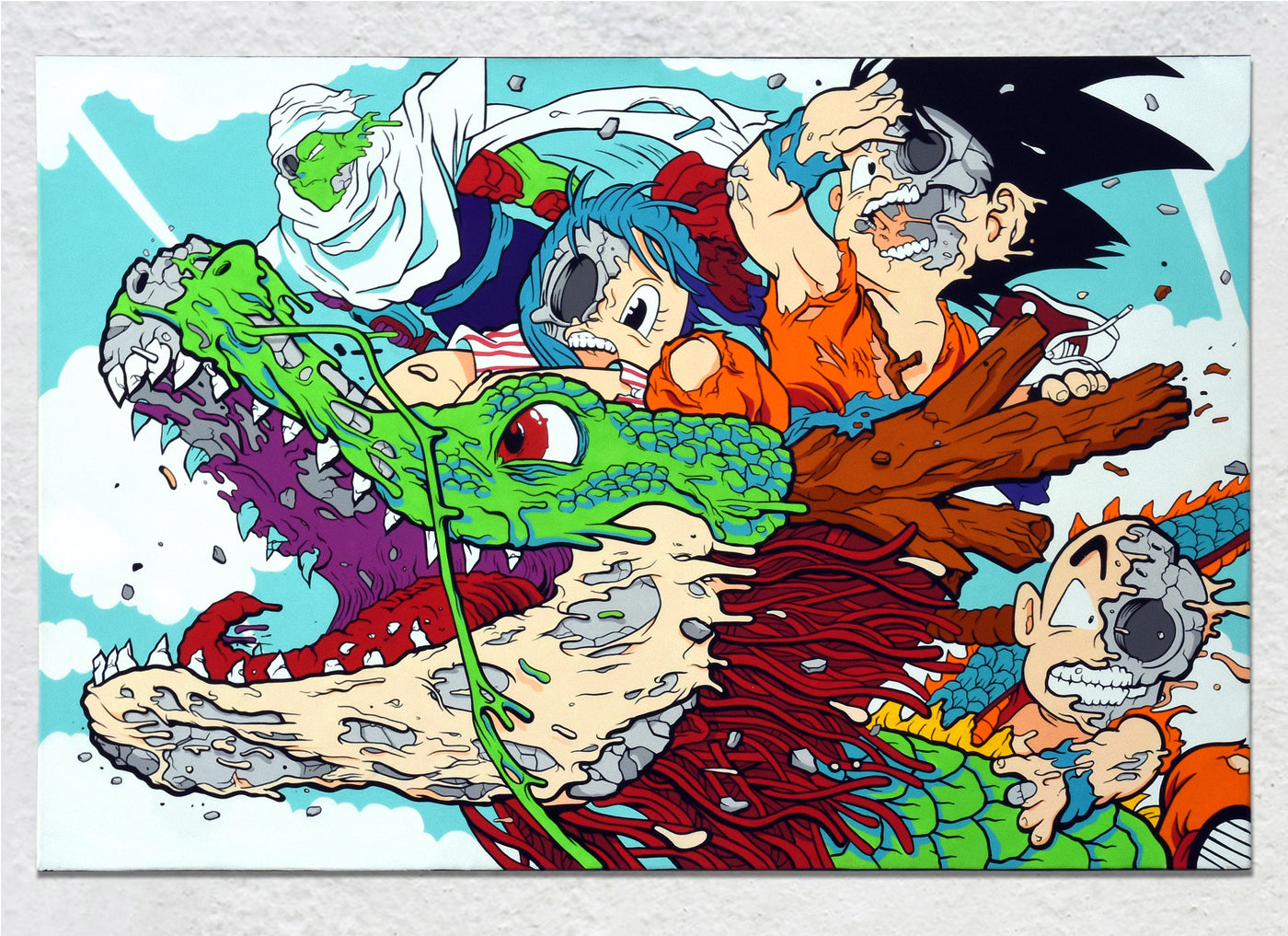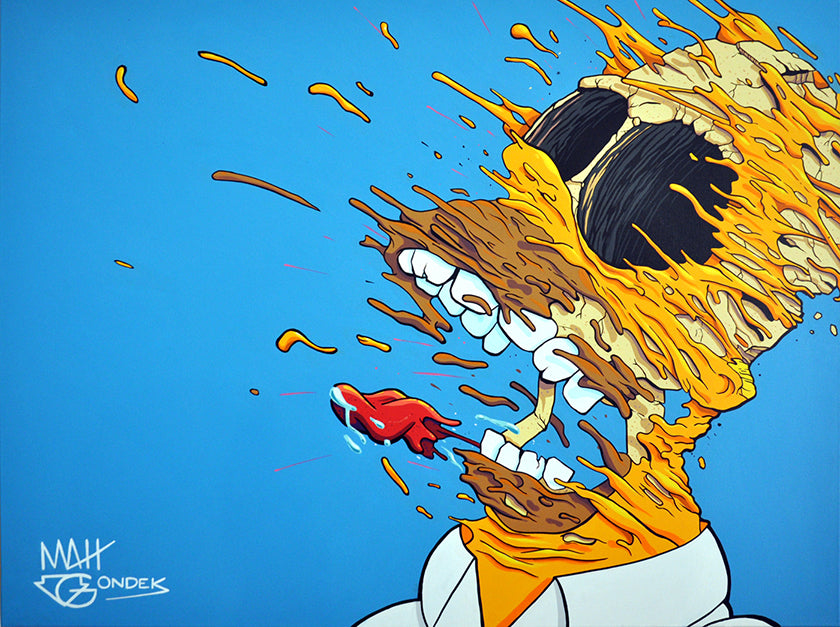Your Cart is Empty
Buy a book, plant a tree.
Pop culture icons with a bang

Matt Gondek takes your favorite cartoon characters and gives them a make-over. Although, it's the kind of make-over you could imagine receiving at the hands of Road Runner and Wile E Coyote, complete with an Acme Corporation sponsored TNT facemask.
Drawn to the clean lines, bright colors, and accessibility of comic books, cartoons, and video games, Matt is a self-taught artist whose philosophy is "figure it out as you go along." Not bad for someone whose numerous gallery shows across the globe have resulted in an increasing number of private collectors snapping up his work.
We caught up with Matt to find out more about his unique take on pop culture and how his dissected and twisted versions of popular cartoons came to be formed.

Your images of our favorite pop culture characters look like they’ve all left their respective shows and joined the cast of Itchy & Scratchy. Why do you think destruction appeals to people?
I think people just like to see things destroyed. We love to watch the mighty fall. It’s why we have so many tabloid newspapers. My work uses very recognizable pop culture icons at the core which provides the "mighty," and I provide the fall.
What triggered you to start deconstructing these characters in the first place?
The deconstructive pop art started at a point where I was feeling very lost. I'd been a freelance illustrator for many years and grew to hate it. I was 30 and didn’t know what to do next with my life. I'd lost all of my drive. I started to paint out of depression and to just try something new without knowing how much I would enjoy the tactile feeling of painting. I chose to deconstruct pop culture icons from the very first painting as they were characters I was familiar and comfortable with. Almost like a comfort food I suppose.

Is your work an attack on nostalgia?
I don’t think that way. I’m simply using the characters I’m comfortable with. You can go to the Louvre in Paris–and see a lot of religious figures in the work there. That’s what those artists were surrounded with: the church. They painted what they knew or saw. I was born in 1982 and raised on Nickelodeon, Nintendo, and comics. Those things mean way more to me than any holy book.

We recently read about your issues with a mural you painted in Florida and a petition to cover it. What are some of the perils faced by street artists like yourself who paint such large pieces and how do you overcome them?
Strictly speaking, I didn’t come from a graffiti/street art background at all. There are guys and girls out there that grew up in the culture who live and breathe it. I'm simply a fine artist that paints outside sometimes. I think one of the biggest perils for street artists is to forget our place.
The instance you’re speaking of started with a small group of people complaining about a 100-foot mural painted in Melbourne, Florida. They felt the mural was too violent for their town (it was my interpretation of Picasso’s Guernica) and fought very hard to have it removed. Public art is one of the easiest and cheapest ways a town can begin revitalization and the majority of the townsfolk knew it. I met so many amazing people who lived in that community–art fans, business owners, influencers, etc., who I was lucky to stand with on my side and fight to keep the mural. I’m happy to say we won.
Lastly, to answer on a street level. If you have a great piece and someone tags it, just go fix it as soon as you can. Stay up on your own work when at all possible and befriend artists in other cities who can help keep an eye on your work, and vice versa.

Other than the characters you paint, what else inspires your art?
As my career grows (13 years and counting) I’m getting more and more interested in both the business side of art as well as preserving longevity. My career went from almost nothing (which felt like forever) to expanding beyond my wildest dreams very quickly. My biggest fear is to lose everything, or worse,yet–fall out of love with the work. My inspiration comes from those who came before me. People like Warhol or Lichtenstein or even more currently KAWS. I’m inspired by how they took their ideas and honed them down to the simplest, easiest way to communicate them. You can criticize any of their business practices, or how they handled their collectors or anything but you can’t knock their work. For what they were doing, the work shows the dedication and time investment in honing their ideas, and I find that fascinating.
Matt Gondek's fresh take on pop art is certainly an eye-opener. You can find more of his work and details of his upcoming shows here.